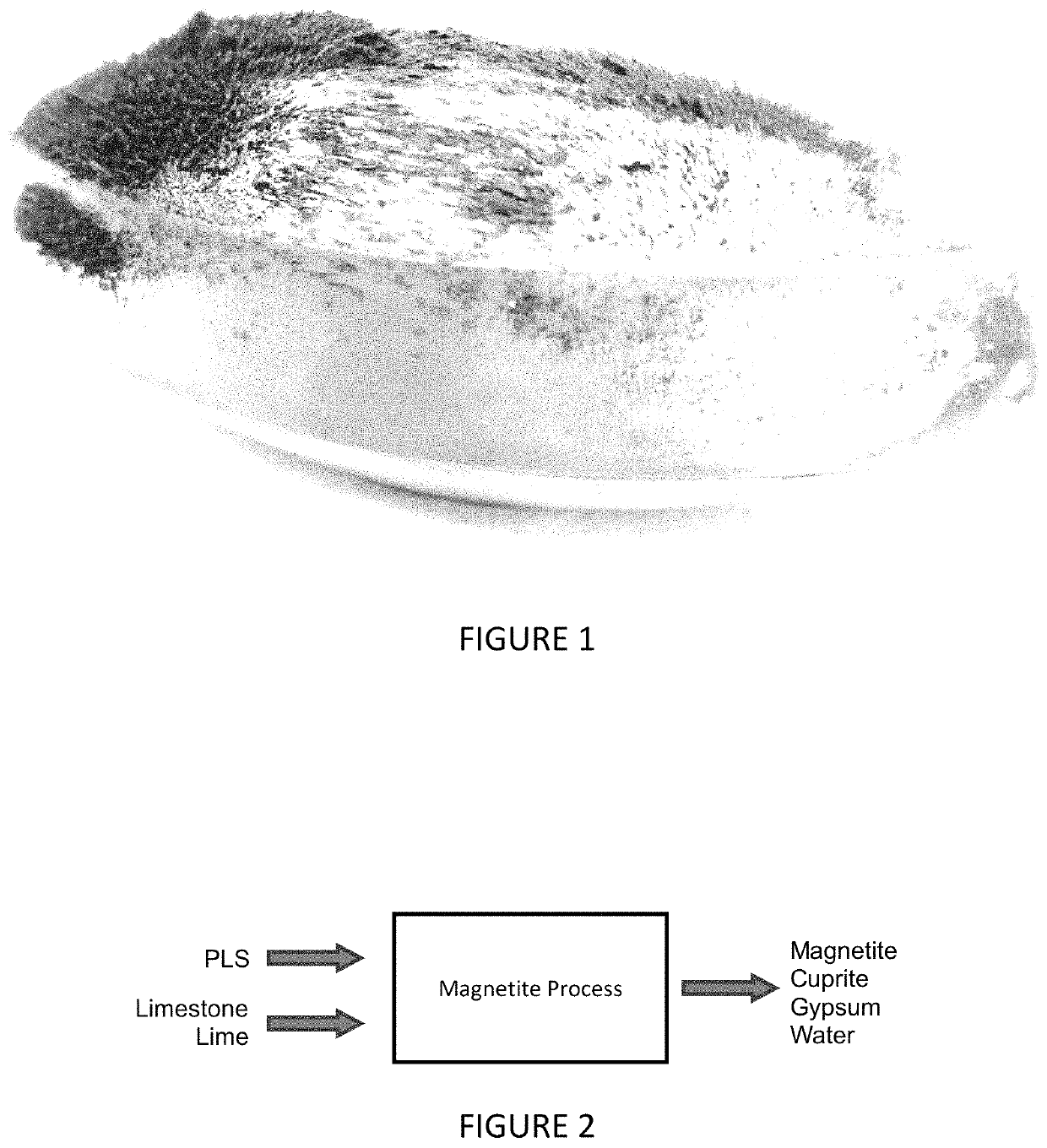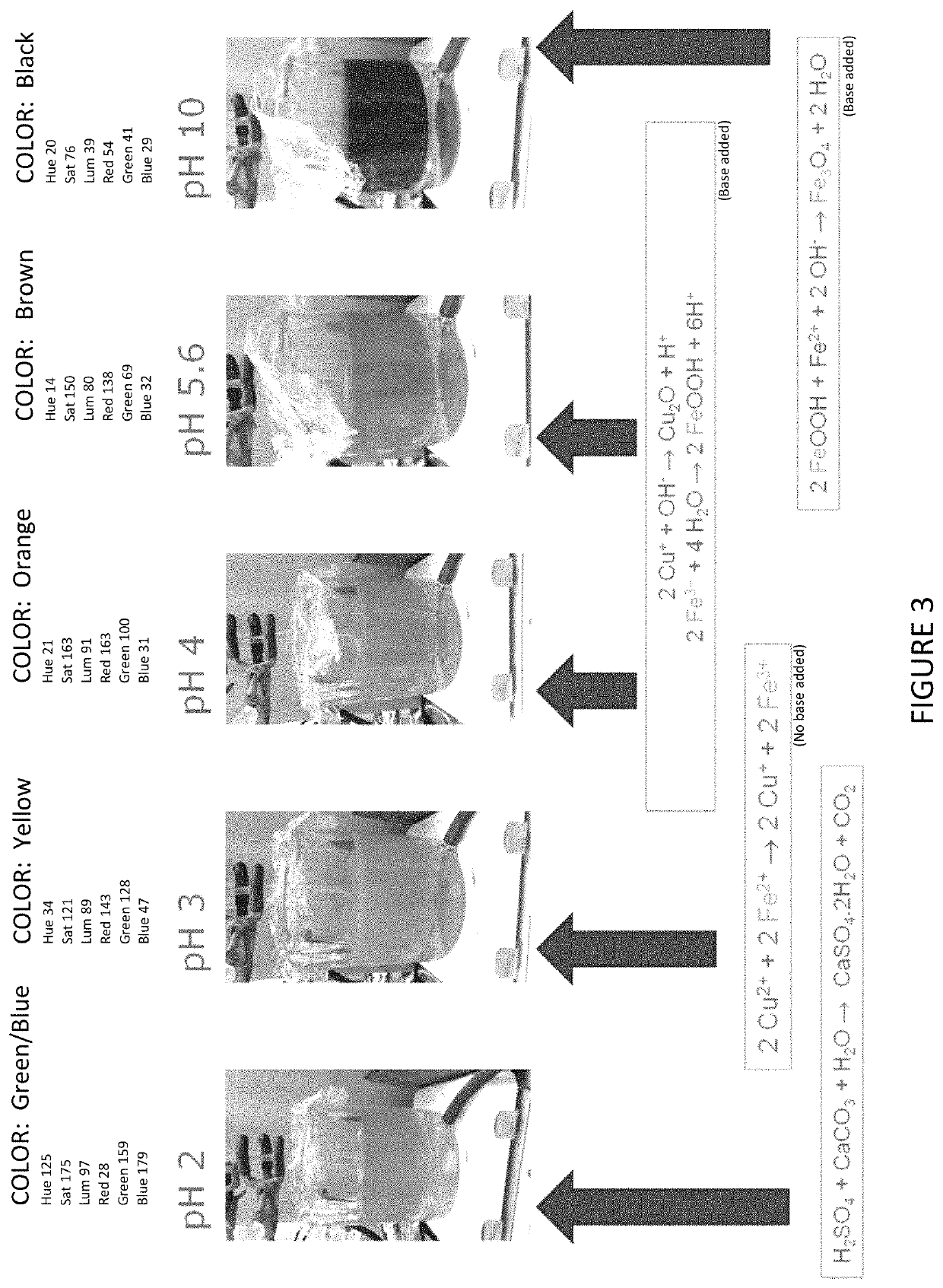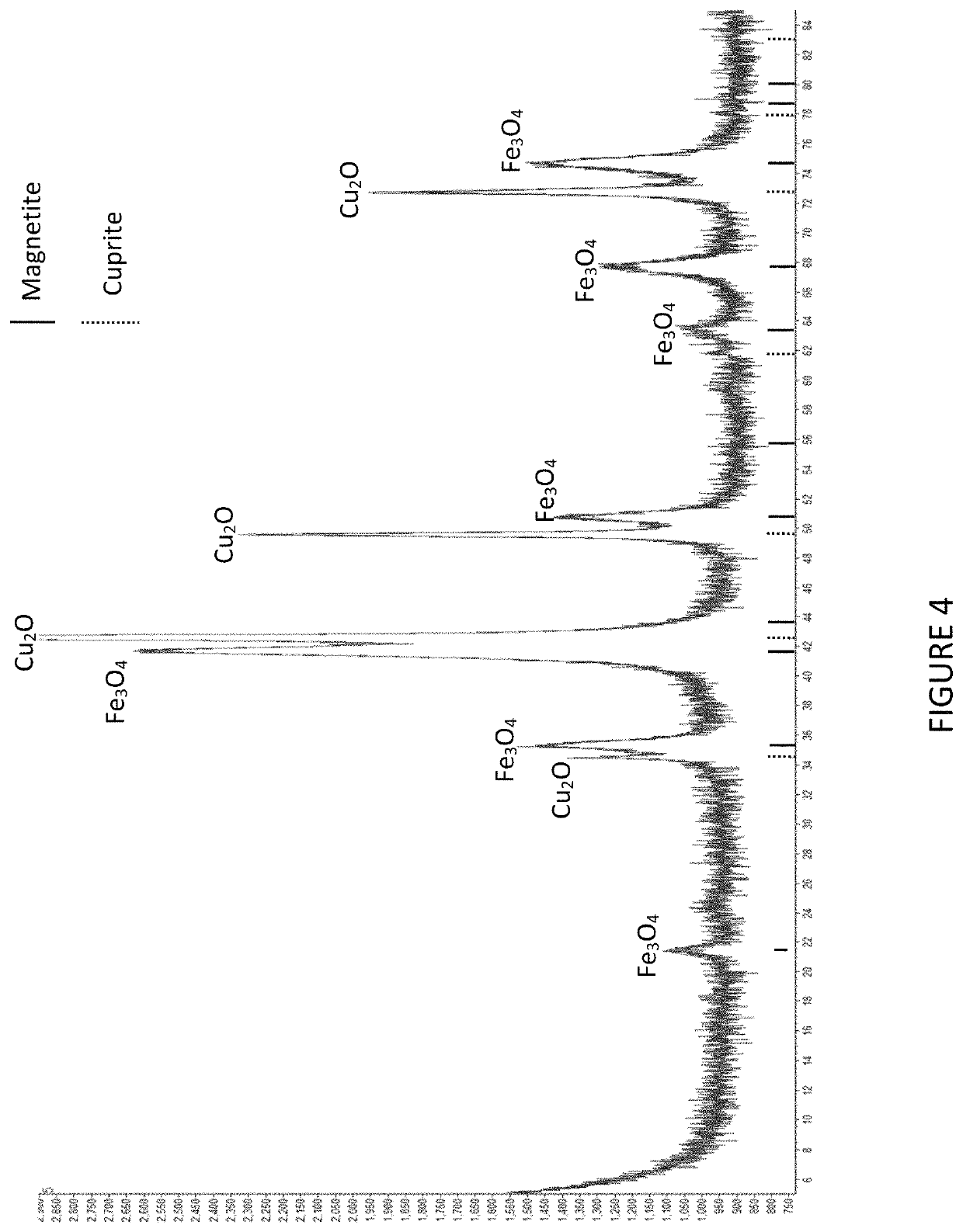Methods for controlling iron via magnetite formation in hydrometallurgical processes
a technology of magnetite and hydrometallurgical process, which is applied in the direction of process efficiency improvement, material recovery, etc., can solve the problems of high reagent cost, water consumption, final waste impoundment, and inability to treat/remove soluble iron from hydromet circuits using traditional methods, and the cost of oxidation is generally prohibitiv
- Summary
- Abstract
- Description
- Claims
- Application Information
AI Technical Summary
Benefits of technology
Problems solved by technology
Method used
Image
Examples
example
[0044]An example of magnetite processing according to a particular embodiment of the invention follows. The purpose of the test was to produce magnetite and cuprite as solid products from synthetic hydrometallurgical liquor.
[0045]The experiment was conducted by providing a solution of 5.2 g L−1 Cu and 8 g L−1 Fe(II) and pH 2.8. The solution was placed in a magnetically-stirred beaker. The pH was adjusted step-wise, over a thirty minute period, with addition of sodium carbonate, to reach a final pH of 9.9. The system temperature was gradually increased from ambient (20° C.) to reach 50° C. after 20 minutes, and then allowed to gradually fall back to ambient temperature (20° C.) for the remainder of the experiment.
[0046]The results of the experiment were as follows. The iron and copper were completely removed from solution to form a dense, black precipitate. Analysis of the final liquor by ICP-AES indicated that copper and iron, if present, were below detection levels (approximately l...
PUM
| Property | Measurement | Unit |
|---|---|---|
| molar ratio | aaaaa | aaaaa |
| molar ratio | aaaaa | aaaaa |
| temperature | aaaaa | aaaaa |
Abstract
Description
Claims
Application Information
 Login to View More
Login to View More - R&D
- Intellectual Property
- Life Sciences
- Materials
- Tech Scout
- Unparalleled Data Quality
- Higher Quality Content
- 60% Fewer Hallucinations
Browse by: Latest US Patents, China's latest patents, Technical Efficacy Thesaurus, Application Domain, Technology Topic, Popular Technical Reports.
© 2025 PatSnap. All rights reserved.Legal|Privacy policy|Modern Slavery Act Transparency Statement|Sitemap|About US| Contact US: help@patsnap.com



